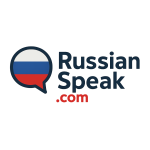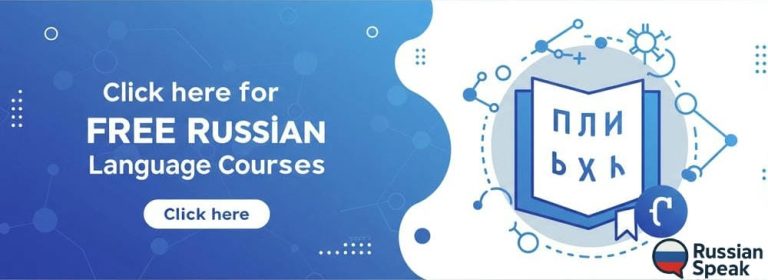The historical development of the Russian language is a multifaceted process, characterized by various cultural and political influences. Its roots can be traced to Proto Slavic origins, with significant transformations occurring during pivotal events such as the Mongol invasions and the reign of Peter the Great. This evolution raises questions about the interplay between language and identity, particularly in the context of modern challenges and the resurgence of regional languages in the post-Soviet era. What implications does this have for the future of Russian?
Table of Contents
ToggleThe Origins and Evolution of the Russian Language

The Russian language, spoken by over 260 million people worldwide, has a deep and complex history that mirrors the cultural, political, and social changes of the Eastern Slavic peoples. Its origins can be traced back to the early medieval period, evolving through centuries into the rich and expressive language used today.
Early Origins of the Russian Language
The Russian language traces its roots to Old East Slavic, which emerged in the 9th century within the territory of Kievan Rus’—a federation of Slavic tribes centered around Kiev. This medieval state was a major political and cultural hub, where Old East Slavic served as the common spoken language. The earliest surviving written records in Old East Slavic appear in religious texts, chronicles, and legal documents, with the Primary Chronicle standing out as a critical historical source for understanding the region and its people.
A pivotal development in the linguistic history of Russian was the introduction of Old Church Slavonic in the 9th century. Created by Saints Cyril and Methodius, this language was specifically designed to translate Christian scriptures for Slavic-speaking populations. It became the first literary and liturgical language among the Slavs.
Old Church Slavonic profoundly influenced early Russian culture, serving as the language of the Orthodox Church and religious literature. The Christianization of Kievan Rus’ in 988 AD further solidified its importance. Derived from Old Bulgarian, Church Slavonic was used extensively in religious services, official documents, and literary works for centuries. Although distinct from the vernacular Old East Slavic spoken by the general population, Church Slavonic introduced a wealth of vocabulary, stylistic features, and grammatical structures that deeply shaped Russian literary tradition and vocabulary.
The integration of Church Slavonic into Russian life provided not only religious continuity but also a lasting cultural identity linked to centuries of faith and artistic expression. This sacred language helped establish a linguistic bridge between early Russian society and broader Slavic traditions, enriching Russian with elements that remain present in modern grammar and lexicon.
The Mongol Invasions: Challenges and Linguistic Growth
The 13th-century Mongol invasions marked a critical turning point in Russian history, profoundly affecting its political landscape and cultural development. Although the Mongol period is often characterized by hardship and foreign domination—referred to as the “Mongol Yoke”—it also brought significant administrative and linguistic changes that contributed to the evolution of the Russian language.
Political and Linguistic Effects of Mongol Rule
Mongol governance introduced new terminology related to administration, military organization, and commerce. Many of these terms entered the Russian lexicon, enriching its vocabulary. The decentralization of political power under Mongol rule allowed regional dialects to develop more freely, increasing linguistic diversity within the Russian-speaking territories. This period demonstrated the resilience of Russian culture and language, which adapted to foreign control and laid the foundation for future unification and state-building.
Cultural Isolation and External Influences
The Mongol dominance lasted roughly two centuries, during which Russia became somewhat isolated from Western Europe but maintained active contacts with Central Asia and the Middle East. These interactions brought Turkic loanwords into Russian, particularly in areas connected to trade and governance.
Later Western European Influences
Following the decline of Mongol influence and especially during the reign of Peter the Great in the late 17th and early 18th centuries, Russia opened more to Western Europe. This period saw a significant influx of vocabulary from German, French, Dutch, and Latin, reflecting broader cultural and technological exchanges. These loanwords enriched Russian further, marking a new phase in its linguistic development.
The Rise of Moscow: Shaping a National Language
By the late 15th century, Moscow had become the dominant political center, uniting various Russian principalities under one authority. This consolidation played a key role in the development of the Russian language.
The Moscow state implemented administrative reforms and encouraged cultural integration, fostering a more standardized form of Russian. This emerging standard became associated with prestige, education, and official use. Nobles and scholars adopted refined speech patterns during this time, which formed the foundation for literary Russian.
Economic growth and expanding trade networks boosted urban centers in Moscow, facilitating cultural exchange and linguistic enrichment. This era was essential in forming a coherent national identity expressed through language.
Peter the Great: Language Modernization and Western Influence
During Peter the Great’s reign in the late 17th and early 18th centuries, Russia underwent wide-ranging modernization that extended to its language. Peter aimed to culturally and intellectually align Russia more closely with Western Europe.
He introduced a significant number of European loanwords into Russian, particularly in fields like science, technology, and governance. To support this, Peter established schools where foreign languages were taught alongside Russian, fostering greater intellectual openness.
These reforms helped Russian evolve into a more flexible and expressive language, capable of conveying complex ideas necessary for Russia’s expanding role on the global stage.
The Emergence of Modern Russian: A Language for a New Era

Beginning in the late 17th century, the Russian language underwent significant transformation, marked by rapid expansion in vocabulary and refinement in grammar. This period coincided with major social, political, and cultural changes, including the reign of Peter the Great, who actively promoted Westernization. As a result, Russian absorbed numerous linguistic influences from Western European languages—particularly French and German—which introduced new terminology related to art, philosophy, politics, science, and daily life. These influences helped modernize the language, making it better suited for intellectual discourse and administration.
The introduction of the printing press in Russia played a crucial role in the standardization and dissemination of the Russian language. Printed books, newspapers, and magazines became widely available, promoting literacy among a growing urban population. The rise of the middle class fostered a literary culture that embraced Russian as a medium for communication, education, and cultural identity. This period saw the emergence of notable writers such as Alexander Pushkin, who is often considered the father of modern Russian literature, helping to establish norms for grammar, style, and vocabulary.
Together, these developments gave rise to Modern Russian—a dynamic and flexible language that both reflects Russia’s rich historical heritage and adapts to its changing society.
The Influence of Other Languages on Russian Vocabulary
Russian vocabulary has been shaped by centuries of contact with diverse peoples and cultures. This linguistic openness is evident in the many loanwords and borrowings integrated into Russian from various languages:
| Source Language | Example Loanword | Type of Integration | Additional Notes |
|---|---|---|---|
| French | Ресторан (restoran) | Loanword | Reflects French cultural prestige in 18th-19th century Russia; many terms from cuisine, fashion, diplomacy |
| German | Штраф (shtraf) | Semantic borrowing | Originally meaning “penalty” in German; adapted to Russian with similar meaning in legal and everyday contexts |
| Tatar | Базар (bazar) | Cultural exchange | Reflects interactions during the Mongol-Tatar period; related to marketplaces and trade |
| English | Интернет (internet) | Modern borrowing | Reflects technological advances and globalization in late 20th-21st centuries |
These examples illustrate how Russian has balanced adopting foreign terms while maintaining a distinct linguistic core. Throughout history, loanwords entered Russian through trade, conquest, diplomacy, and cultural exchange. For instance:
- French influence peaked during the 18th and 19th centuries when Russian aristocracy adopted French as their primary language for social communication.
- German influence came largely through Peter the Great’s reforms and Russia’s close ties with German-speaking states.
- Tatar influence dates back to the centuries-long presence of the Golden Horde and other Turkic peoples in the region.
- English influence is most prominent today due to technological innovations and global communication.
This linguistic diversity enriches Russian vocabulary and reflects Russia’s complex historical interactions with neighboring nations and cultures.
Soviet Era: Standardizing Language for Unity
During the Soviet period, significant efforts were made to standardize the Russian language, which became a key factor in fostering communication across the vast and ethnically diverse territory of the USSR. Russian was established as a common language that linked many peoples from different regions, creating a shared linguistic foundation.
Development and Standardization
The Soviet era saw the consolidation of Russian grammar, spelling, and pronunciation into a standardized form that was taught consistently throughout the country. Educational systems across all republics adopted Russian as a primary language of instruction, enabling students from various ethnic backgrounds to learn and use it fluently.
This widespread education in Russian helped create a bilingual or multilingual society, where Russian served as a practical tool for everyday communication, education, science, and cultural exchange. The standardization process also ensured clarity and uniformity in written and spoken Russian, making it accessible to millions.
Regional Languages and Dialects
While regional languages and dialects remained part of everyday life in many communities, the prominence of standardized Russian provided a common linguistic platform that connected people across different areas. The use of Russian allowed speakers of diverse native languages to engage with one another easily and participate in broader cultural and social activities.
Literary Achievements
The Soviet period was a remarkable time for Russian literature. Writers and poets created works that celebrated human experience and reflected social themes relevant to the time, using the richness of the Russian language. The era produced many classics that continue to be cherished today for their artistic merit and linguistic beauty.
Literature, newspapers, radio, and theater in Russian reached wide audiences, contributing to a shared cultural heritage. The standardization of Russian helped maintain consistency in literary style and expression, which enriched the cultural life of the population.
Russian as a Cultural Bridge
By the mid-20th century, Russian had become a natural language of communication for millions of people throughout the USSR’s many regions. It served not only as a tool for interaction but also as a cultural bond that brought together diverse communities.
The lasting impact of this linguistic development is evident today, as Russian remains widely spoken and continues to be an important medium for education, literature, and communication across many countries formerly part of the Soviet Union.
The Post-Soviet Linguistic Landscape
Since 1991, there has been a growing interest in regional languages and dialects throughout Russia. Many communities have renewed their connection to local linguistic traditions while continuing to use Russian as a common language, creating a rich and interconnected cultural environment.
Russian remains the primary language used across the country, but it now exists alongside numerous local languages in schools, media, and daily communication. This coexistence highlights the wide geographical expanse of Russia and the variety of cultural influences present within its borders.
The relationship between Russian and local languages continues to evolve, shaping how people express their identity through language today. This dynamic linguistic environment reflects both a respect for local heritage and the ongoing importance of Russian as a unifying means of communication.
The Future of the Russian Language
As society changes, the future of the Russian language will reflect broader social and cultural developments both within Russia and internationally. Several key factors will influence its growth, preservation, and global presence.
1. Language Preservation and Revitalization
In a world where many languages face pressure from dominant global tongues, efforts to preserve Russian remain strong. Within Russia and neighboring regions, there is an emphasis on maintaining linguistic heritage by supporting regional dialects and minority languages alongside standard Russian. Languages such as Tatar, Bashkir, and Chechen coexist with Russian, and educational programs encourage bilingual learning to keep these languages alive while promoting proficiency in Russian. Cultural institutions and schools prioritize the study of classical Russian literature and language skills to maintain a strong connection to linguistic traditions across generations.
2. Expanding Global Presence
Russian continues to be widely spoken across large areas of Eurasia and remains an important language for communication in many communities. Its role as a major language encourages learning in various parts of the world, especially where cultural or economic exchanges with Russian-speaking populations take place. Educational institutions outside Russia offer Russian language courses, reflecting growing interest in the language for academic, professional, and personal reasons. This broadening use supports the language’s continued relevance on the international stage.
3. Technological Integration and Communication Advances
Technological progress is transforming how languages like Russian are taught and used. Improvements in translation tools, speech recognition, and automated transcription make it easier to communicate across language barriers. Traditional media such as books, newspapers, radio, and television in Russian continue to be important, supporting language learning and everyday use. These developments increase the accessibility of the Russian language for learners and speakers worldwide, facilitating its spread and daily use.
4. Cultural Exchange and Linguistic Enrichment
Cultural interactions between Russian-speaking communities and others enrich the language by introducing new words and expressions. Influences from other languages are evident in modern Russian slang, business terms, and technical vocabulary. Conversely, Russian literature, music, film, and art attract international audiences, promoting cross-cultural understanding. Words from classic Russian literature have been adopted into other languages, while loanwords from various sources continue to enter Russian, keeping it vibrant and adaptable.
The future of the Russian language lies in a balance between preserving its rich linguistic heritage and adapting to new social and cultural influences. Efforts to maintain traditional forms coexist with expanding global use and technological progress that increase accessibility. Cultural exchanges further enhance the language’s vitality. As a result, Russian will continue to develop—reflecting both diverse local identities and broader trends in global communication and culture.
A Living Legacy: The Enduring Spirit of the Russian Language
The history of the Russian language is a story of growth, resilience, and cultural pride. From ancient Slavic roots through periods of challenge and transformation to its modern form, Russian has been a vital thread connecting generations.
As a living language, it continues to evolve—embracing new influences while preserving its deep heritage. This dynamic journey makes Russian not just a means of communication but a powerful symbol of national spirit and unity.
Frequently Asked Questions
How Does the Russian Language Compare to Other Slavic Languages?
The Russian language, utilizing the Cyrillic script, shares significant Slavic roots with other languages like Polish and Czech. Its distinct phonetics and vocabulary reflect both its shared heritage and unique evolution within the Slavic linguistic family.
What Are Common Misconceptions About the Russian Language’s Origins?
Common misconceptions about the Russian language’s origins often overlook its Old Slavic roots and the complexities of language evolution. Many assume a linear progression, disregarding the influences of neighboring languages and dialectal variations throughout history.
How Does Russian Dialect Differ Across Regions?
Russian dialects exhibit significant regional variations, influenced by geographic, cultural, and historical factors. These dialectal influences contribute to distinct phonetic, lexical, and grammatical features, reflecting the diverse linguistic landscape across Russia’s vast territories and communities.
What Role Does Russian Play in International Diplomacy?
Russian serves as an essential tool in international diplomacy, facilitating communication among nations. Its diplomatic significance often mitigates language barriers, enabling more effective negotiations and fostering cooperation in global political arenas, despite its regional variations.
How Has Technology Influenced Modern Russian Language Use?
Technology has considerably influenced modern Russian language use, fostering language evolution through digital communication. Online platforms facilitate the rapid exchange of ideas, leading to the emergence of new vocabulary and expressions that reflect contemporary societal changes.



